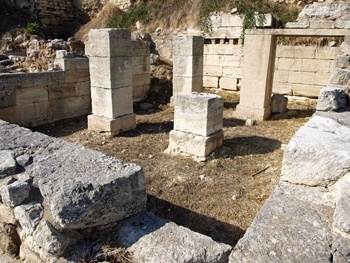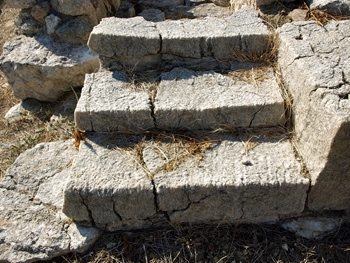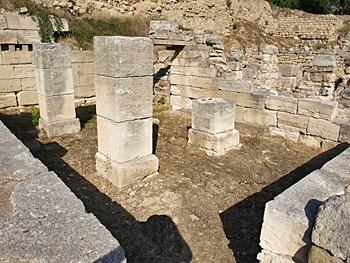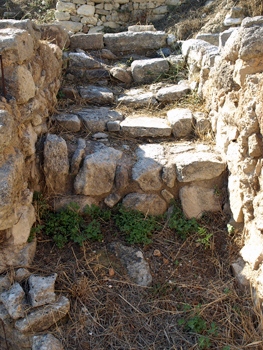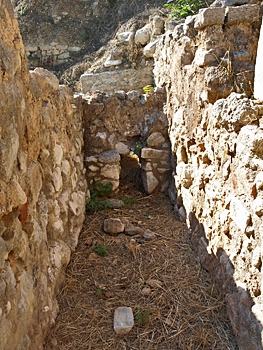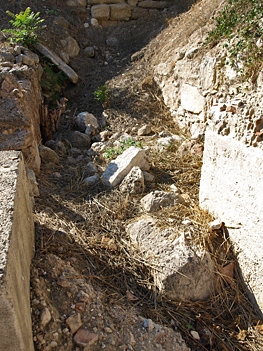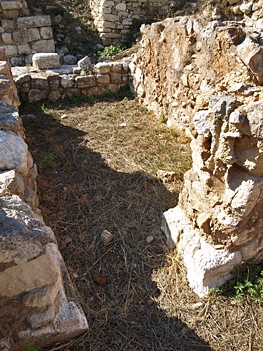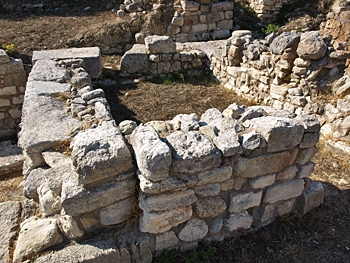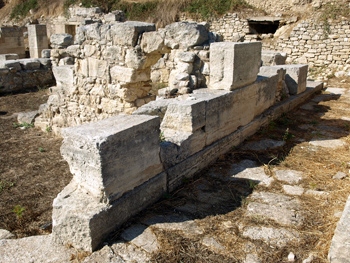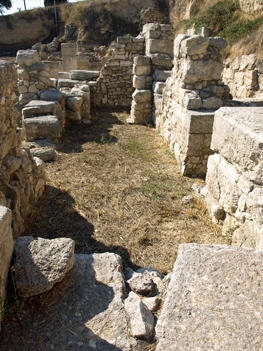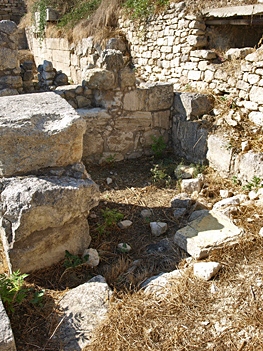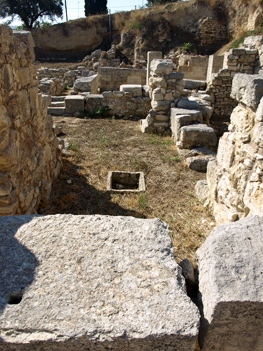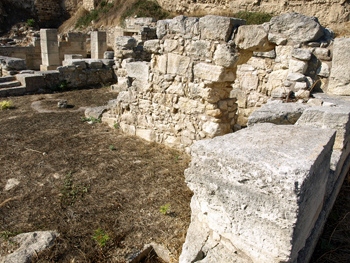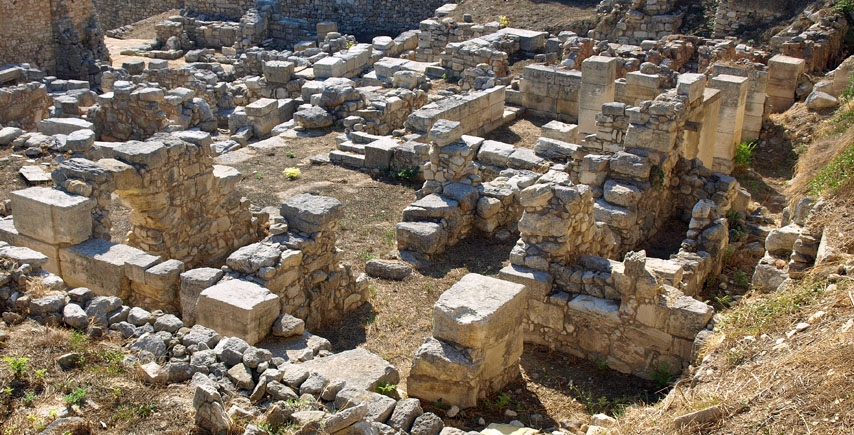
An annexe to the Little Palace
The Unexplored Mansion, which as John McEnroe drily points out is neither unexplored nor a mansion, was built in MM IIIB or LM IA after the construction of the Little Palace. As the plan shows, the building had a central hall (H) with four pillars. This was surrounded on three sides by corridors (E, F, L). To the north there were four rooms that look like storage magazines (A-D). Staircases (G, K, O) led to the upper floor. It was connected to the Little Palace by a bridge. Since it contained no Minoan Hall or lustral basin it is thought to have been designed to provide extra storage, work and accommodation areas for the Little Palace which had already been built and which stood adjacent to the east of the Unexplored Mansion.
It is thought that many buildings on Crete were damaged during LM IA by the earthquake that hit Thera before the volcanic eruption. Building work at the Unexplored Mansion came to a halt and it seems to have been left empty throughout the LM IB period. Some 50 years later, at the beginning of LM II, the Unexplored Mansion was reoccupied following repairs and further limited construction work. Not long after the reoccupation, some further damage was caused by fire. Before the end of LM II the building then suffered a catastrophic fire which put virtually the entire building out of use. The central and south parts of the building were never reused. The north part, however, (rooms A, B, C and D) was reinhabited in LM IIIA1 both on the ground floor and the upper floor. This fire seems to have been repeated in other major buildings west of the Knossos Palace. Even the Palace itself is thought to have suffered a LM II destruction, requiring substantial rebuilding work in LM IIIA1. The Unexplored Mansion escaped the fierce fire which destroyed the Little Palace in LM IIIA2 and remained occupied until LM IIIB.
Popham was of the view that the Unexplored Mansion carried out similar functions to the Little Palace. He believed that it contained cult rooms as well as storage areas and living quarters. The room he identified as a cult room was the Pillar Hall (H) which he called a pillar crypt. He believed that above it was a domestic shrine, since an LM II cult figure had fallen into Room H during the destruction. However, the Pillar Hall is much bigger than any other known pillar crypt and metalworking equipment which had also fallen from above suggests that metal working was taking place.
Basing his view on a comparison with the hypostyle hall in the north wing at Malia, Graham argued that there was a dining area on the upper floor of Room H, but this too has been rejected on the grounds that it is unlikely the Unexplored Mansion copied the functions of the Little Palace. Hitchcock points out, however, that there were precedents for a link between cult activity and metalworking in the near east so it is possible that both were being practised in the Unexplored Mansion but she further points out that this dates from the LM II occupation of the building and may not have been what the Minoans used the building for originally. The generally accepted view seems to be that the the Unexplored Mansion was used as an annexe to the Little Palace.
A fuller write-up will appear in due course.


